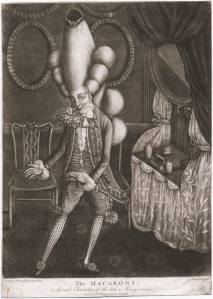BAROQUE AND ROCOCO FASHION
Baroque
Baroque is a period in the history of Western art
coinciding with the seventeenth century. It's likewise a style that utilized
overstated, exaggerated motion and clear, easily interpreted detail to produce
drama, exuberance, and grandeur in sculpture, painting, literature, dance, and
music. The style began around 1600 in Rome, Italy and spread to the most part
of Europe. It lasted for around 150 years.
With the ruling of King Louis XIV, this period in style
history was about sheer indulgence and luxury. This is where architecture,
fashion, music and art flourished in Europe to its pinnacle.

The Baroque period
gave the lower class people a freedom of choice which in the other periods was
not with them. This is one of the most important period in terms of development
of fashion guilds which became authorized by the ruler himself. It permitted
both the men and women to be members. The designers were in demand by the
higher and middle classes also.
Women
Signature element of this period was use of colors, gold filigree.
Relating to the grandeur of the period the outfits had gold embroidery, laces,
pearls and ribbons. The clothing was free from extra details. The dresses
became easier as single outfits were created. Natural silhouettes were adopted
and clothing got more layered. This was to enhance fuller figure. Necklines were
plunging and women wore large sleeves that collected
at the wrist or elbow with turned-back lace cuffs. Patterned fabrics
were being replaced by solid colour silks and brocade. Hairstyles with
the passing time became higher and higher.


Men
The men
wore high waists, laced collars and cuffs. It was definitely relieving in
comparison to the overtly ornate Renaissance fashion. Men would wear ill-fitted
breeches known as pantaloons which fell till the knees. They often wore wigs
and colored their hairs. Through the span of time close-fitted breeches became
stylish that were either tied, buttoned or buckled at the knee with a hose worn
underneath it.Men began wearing clothing called 'en suit' or the suit that we
know of today. It comprised of a coat, waistcoat and breeches. Haircuts
additionally started towering high with the progression of time.

Both men
and women wore high heels.

Rococo
Rococo or
Late Baroque is an
18th-century artistic movement and style, affecting many aspects of the
arts including painting, sculpture, architecture, interior
design, decoration, literature, music, and theatre. It developed in the
early 18th century in Paris, France as a reaction against the grandeur,
symmetry, and strict regulations of the Baroque.
Everything during this time was heavy.
In this time people were not
differentiated by wealth but by education and aesthetics.
Women
Floral prints, stripes and pastel colors
became popular that time. Amid this period, another another silhouette for
women was creating. Panniers, or wide loops worn under the skirt that expanded
sideways, turned into a staple. Extremely wide panniers were worn to formal
events, while littler ones were worn in ordinary settings. Waists were
restricted by corsets contrasting to wide panniers. Skirts opened in front
showing the underneath petticoat. The robe à
l’anglais featured a snug bodice with a
full skirt worn without panniers, usually cut a bit longer in the back to form
a small train, and often some type of lace kerchief was worn around the
neckline. These gowns were often worn with short, wide-lapeled jackets modeled
after men’s redingotes. Marie Antoinette introduced thechemise
à la reine (pictured right), a loose
white gown with a colorful silk sash around the waist.


Men
Men generally wore different variations
of the habit à
la française: a coat, waistcoat, and
breeches. The waistcoat was the most decorative piece, usually lavishly
embroidered or displaying patterned fabrics. Lacejabots were still worn tied around the neck.
Breeches usually stopped at the knee, with white stockings worn underneath and
heeled shoes, which usually had large square buckles. Coats were worn
closer to the body and were not as skirt-like as during the Baroque era.


No comments:
Post a Comment